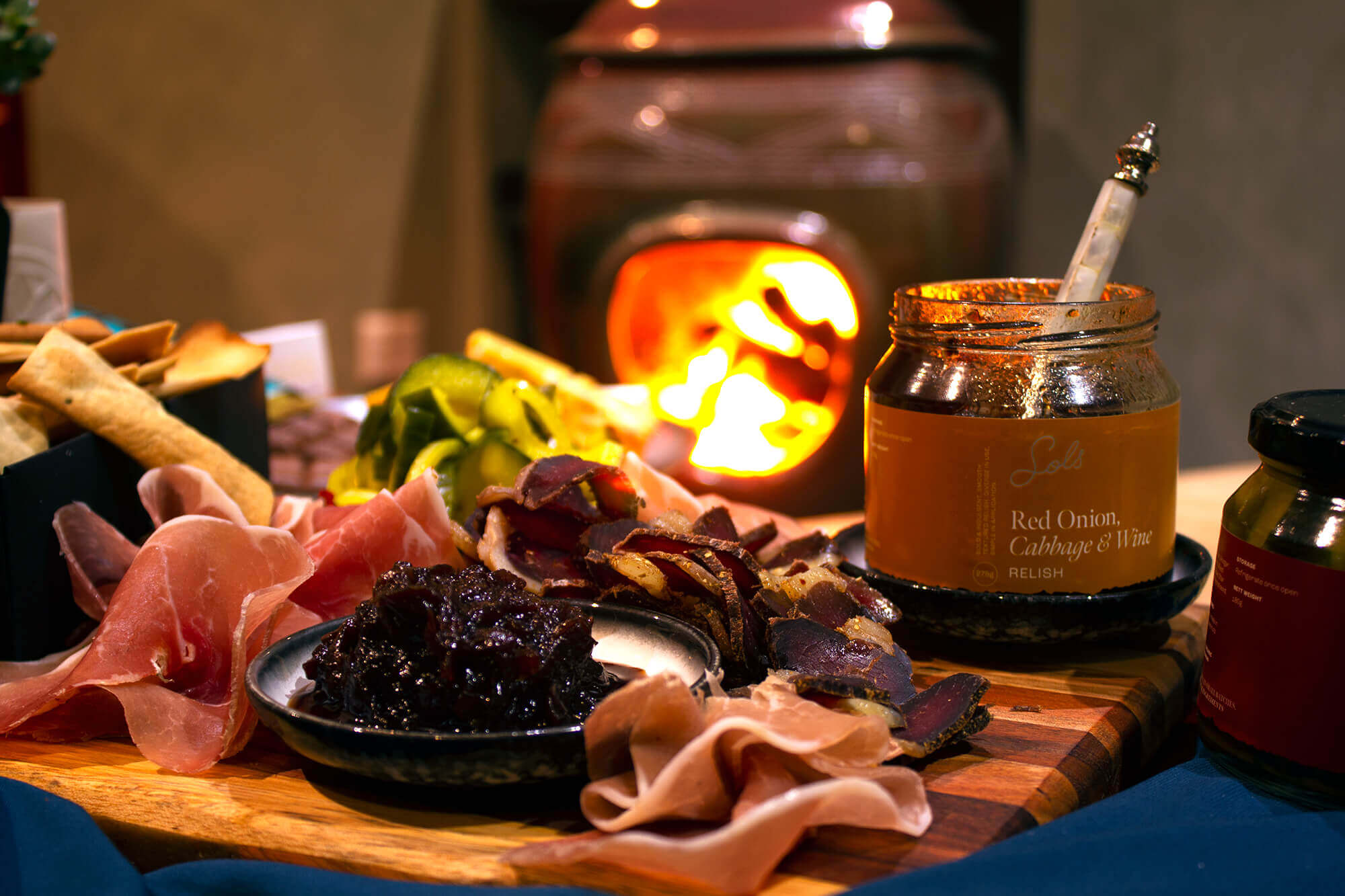With the winter solstice just around the corner and an almighty set of cold fronts approaching Cape Town this week, you’d be forgiven if your default response was to grab a few packets of soup off the shelves at your closest supermarket.

Winter produces an array of prominent, useful ingredients that come to the forefront as the true heroes of the cold months, and we should celebrate them accordingly. Although Cape Town isn’t subjected to a vicious winter, there’s definitely a chill in the air that modifies our behaviours around food and how we purchase, cook, share and consume it.
Here’s what you can expect in this post:
- Citrus thrives in winter
- Take your pick of the lush vegetables on offer
- Comforting classic dishes
- What are some of our favourite South African winter dishes?
- The numerous benefits of seasonal eating
- A brief history of salting, hanging, preserving & pickling
- Traditional South African cured products
- Why is salt such a key commodity?
- Sol’s winter coppa salad
Citrus & other fruits thrive in winter
You don’t need us to tell you that citrus is rich in Vitamin C and also, generally speaking, a delicious and healthy thing to have around. One of the most beautiful and simple joys during the winter months is picking up a massive sack of oranges for not a lot of money.

The diversity of citrus in South Africa means that there’s something for everyone. Orange, grapefruit, lemon, lime, mandarin and the quintessentially South African fave, the naartjie, are all freely available and affordable when it’s grey outside. Even melon, sometimes a divisive fruit, provides hints of summer in the depths of winter and certainly has its fanatical supporters.
Winter vegetables in South Africa
Fruit and veg go together like horse and carriage. Take your pick of this variety of fresh vegetables which come into their own between now and August in South Africa:
- Asparagus
- Artichokes
- Beetroot
- Broad beans
- Broccoli
- Brussels sprouts
- Cabbage
- Carrots
- Cauliflower
- Celeriac
- Celery
- Cucumber
- Jerusalem artichokes
- Parsnips
- Peas
- Peppers
- Potatoes
- Pumpkin
- Radishes
- Spinach
- Spring onion
- Squash
- Sweet potatoes
- Turnips
- Waterblommetjies
Comforting classics loved in South Africa
Where else in the world can you huddle around a massive potjie, swapping stories about life while a delicious dish bubbles away for hours and you seem to lose track of time in the process? Potjies typically incorporate rich, hearty and earthy flavours that warm the cockles of the heart. It’s a quintessentially South African winter dish and it reminds us of quality time spent by the fire.
And where do you stand with regards to avo on toast? Some see it as a snack, others regard it as the main event, but all avo lovers will agree that winter is the best time of year because it means that “butter pears” are abundant and affordable.

Eight of South Africa’s favourite dishes
They all brings us together, evoking wholesome, positive memories and taste just like home. This is not an exhaustive list, but ‘t a decent one nonetheless.
- Hearty potjiekos
- Bunny chow
- Tomato bredie
- Cape Malay curry
- Traditional bobotie
- Rich onion soup
- Spicy butternut soup
- Malva pudding with custard
The benefits of seasonal eating
Human beings have learnt to keep excess produced from the more prolific seasons to keep throughout the year. In modern times, although there’s no pressing need to squirrel our foodstuffs away to save them for a rainy day, there is absolutely no need to consume imported products all year. Who can afford to do that anyway? If one eats with the seasons, there is an abundance of delicious fresh products right on our doorstep, right around the clock.
Not only does seasonal eating allow us to enjoy foods at the peak of their powers and flavours, but it also aids sustainability and is budget-friendly.
Salting, hanging and preserving & pickling
For a long time, people have been preserving food by cooling/freezing, drying, curing, smoking, pickling, fermenting and preserving it in honey. Before the bountiful winter products presented themselves to us, people of yesteryear had to get through the bitter cold months when crops were sparse and they used these techniques. Heres’s a brief history of these methods via southernkitchen.com:
Historians believe that pre-historic people preserved food accidentally through geography and living conditions.
In places where there were large deposits of salt, people used it to cure foods. In ancient Mesopotamia (Iraq), during the Akkadian Empire, people cured and smoked meat, dried apples, and preserved fruit in honey. As far as pickles go, they’ve been around since ancient times, made either with brine or by fermentation.
People in India were likely the first to make cucumber pickles over 3,000 years ago. Ancient Egyptians and Babylonians pickled fish, including catfish, salmon and pickled goose. Ancient Chinese people used vinegar brines for pickling proteins, from eggs to a variety of meats, including rabbit, venison and goat.
Canning only arrived in the early 19th century, after Emperor Napoleon Bonaparte created a cash-prize challenge for whoever could create a method to preserve food and keep his armies fed. French confectioner Nicholas Appert won the money when he developed canning, using the same process that continues today to preserve seafood, fruits, vegetables, dairy and meats — heating, boiling and sealing food in glass jars.
All of these old methods have practical and frequent uses today. Saving a surplus from the winter allows us to enjoy our favourite winter warmers all year round, especially delicious preserved citrus and pickles.

Traditional South African cured products
Biltong doesn’t need much of an introduction. We’ve mentioned malva pudding and bobotie already in this post, but biltong is perhaps even more quintessentially South African than any of them. Bokkoms, biltong’s fishy equivalent, hails from the West Coast and is a superbly salty dried snack.

Why is salt such a key culinary commodity?
The expression to be “worth one’s salt”, which alludes to a competent person who deserves what they earn, is most often said to have its roots in ancient Rome, where soldiers were sometimes paid in salt or given an allowance to purchase it. Salt plays a pivotal role in the processes of preservation and curing and, although it is a relatively inexpensive food item, its numerous applications and worldwide appeal make it totally priceless.

Sol’s winter coppa salad
In case you missed it, we made a simple yet sensational salad last week that cuts through the noise and is perfect for winter. It makes use of elegant winter greens, creamy goat cheese and the finest charcuterie, all brought together by a citrusy, peppery zing. Hot comfort meals certainly have their place, but this winter salad keeps things light and provides a beautiful accompaniment to lasagne.

There are no hard and fast rules that dictate how we should feed ourselves in the winter months, but there’s plenty to be said for keeping it local.
Stay warm and let us know what you’re eating this week!


One thought on “A celebration of winter foods in South Africa”